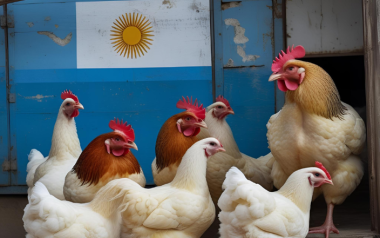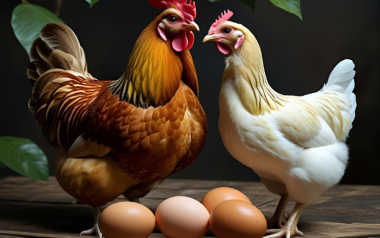Sources: Available upon request.
03 May 2024
Egg prices rise in the U.S.
In recent months, egg prices in the United States have skyrocketed, leaving consumers wondering why their breakfast staple has become so expensive. The culprits? Avian Influenza outbreaks and a surge in demand.
In recent months, egg prices in the United States have skyrocketed, leaving consumers wondering why their breakfast staple has become so expensive. The culprits? Avian Influenza outbreaks and a surge in demand. Let’s delve into the details.
According to figures from the U.S. Federal Reserve Economic Data (FRED), as of March 2024, a dozen eggs in the U.S. averaged $2.41 dollars, representing a 10% year-over-year increase.
The Avian Influenza factor
During the past month, nearly nine million birds in the U.S. have been culled due to outbreaks of Highly Pathogenic Avian Influenza (H5N1). This avian flu strain has wreaked havoc on poultry farms, causing disruptions in egg production. The situation has led to supply shortages and contributed to the rising cost of eggs.
David Anderson, a professor in the Department of Agricultural Economics at Texas A&M University, attributes the price surge to the effects of H5N1. Farms have faced interruptions in production as they grapple with infected flocks. Cal-Maine, the leading egg producer in the U.S., recently reported a new outbreak within its Texas facilities, resulting in the culling of nearly two million birds—equivalent to over 3% of its total flock.
The U.S. Department of Agriculture (USDA) data reveals that in April alone, more than 8.7 million commercial birds were affected by infectious outbreaks. This marks the highest incidence of avian flu cases so far this year. Since the epidemic began in February 2022, a staggering 90.8 million birds have been lost across backyard and commercial farms in 48 states.
Increased demand and inflationary effects
Beyond avian flu, another factor driving egg prices is increased consumer demand. Inflationary pressures have affected various protein sources, including pork and beef. As prices for these meats rise, consumers turn to alternative protein options, such as eggs. Consequently, egg demand has surged.
Jada Thompson, an economist at the Division of Agriculture at the University of Arkansas, predicts that egg prices will continue to rise this year. However, she believes they won’t reach the levels seen in 2023. Unlike the frequent outbreaks of H5N1 in the previous year, the current situation is less recurrent. Additionally, U.S. poultry farmers have better prepared themselves to mitigate the impact, maintaining larger replacement inventories.
Conclusion
In summary, the convergence of avian flu outbreaks and increased consumer demand has sent egg prices soaring in the U.S. While the situation remains challenging for farmers, consumers can expect to pay more for their omelets and scrambled eggs until the avian flu threat subsides.










































